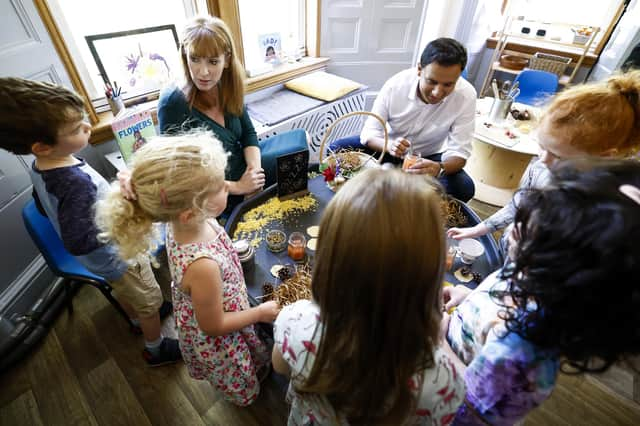General election: Scotland, the 'original red wall', is vital to Labour's chances of ousting Tory government – Katherine Sangster


What is certain is that it suits the SNP in Scotland to have an unpopular Tory Prime Minister in Westminster.
The Conservatives and the SNP have made clear that they want the next election in Scotland to be about “muscular” unionism versus independence, so it therefore falls to the Labour party to define the future of the UK and present their own bold and distinct vision of a socially democratic UK.
Advertisement
Hide AdAdvertisement
Hide AdAt times this might lead the party away from its comfortable political ground – the cost of living, better public services, and job security – into more challenging topics, but the transformational agenda that Blair and Brown put forward in 1997 included the delivery of Lords reform and devolution for Scotland and Wales.
The scale of the challenge for the Labour party to form the next government cannot be underestimated. It needs to win 124 seats to have a majority of one.
Last year the Fabian Society identified the 150 target seats it needs to win to form a stable government, and 25 of those are in Scotland.
There is no shortcut to Number 10; the party must be ambitious and aspire to win seats across the length and breadth of the UK, including Scotland.
Just as UK Labour must recapture seats in the north lost to the Tories, the challenge for the Scottish party is to appeal to key voters who make up the “heartlands” of Scotland. Their path to power runs through Scotland, the original “red wall”.
Our new report “Winning Back the First Red Wall” shows the Labour Party could be in a position to turn the tide and win back nearly half the seats they once held in Scotland at the next General Election.
From our early analysis, it is doing well versus the SNP in diverse urban areas and poorer areas with settled older residents. However they are doing less well in suburban wards with younger and more aspirational families.
Our report identifies how Labour can make the necessary gains and win seats from the SNP with a targeted focus on younger, more aspirational voters.
Advertisement
Hide AdAdvertisement
Hide AdUnder the leadership of Anas Sarwar, the party has arrested its decline and made considerable progress in the local elections in May, taking second place from the Tories and gaining control of several councils.
This achievement in the short space of a year should not be underestimated.
It was not so long ago that Scottish Labour was being written off as a political force and was seen to be in terminal decline. The gains in May came primarily at the expense of the Conservatives. The losses previously seen to the SNP stabilised and the years of declining vote share halted.
As we look forward to a general election, Scottish Labour has to be making inroads into that SNP vote.
In Anas Sarwar, the party has a popular leader with a broad appeal, and the next steps need to be institutional best practice, getting the best candidates into the right constituencies, learning from organisers and activists in the places that Labour did well, along with working hard to get the right message to key voters.
Labour is now in control of several councils in Scotland and those councillors can demonstrate the difference that the party makes in power.
This new report quantifies the size of the opportunity and shows that, statistically, 25 seats are within its grasp. There is no doubt there is still a mountain to climb but the path to a Labour government is now clear.
Our analysis, which looks at how votes were cast in the local elections, shows that 20 per cent of SNP and Green voters put Labour as their second choice in the ranked voting for council elections.
Advertisement
Hide AdAdvertisement
Hide AdThis indicates there is a significant number of pro-independence voters who do not vote purely on constitutional matters.
If Labour can win over just half of these voters, it could win 20-plus seats in Scotland. The opportunity comes from persuading these voters that only Labour are the alternative to the Tories in a UK general election.
There is little to be gained from trying to squeeze the Tory vote further; even bringing the Conservative vote down to the levels of 1997 only wins four seats.
Examining where voters put their second party preferences gave us an indication of the kind of voters Labour has a chance to capture in the future. We then used demographic data to examine the groups of voters the party is doing well with, relative to the SNP, and the groups where progress has been more limited.
Labour depends on Scotland to achieve a majority government and Scottish Labour’s future success demands a wide coalition of voters across Scotland’s towns and cities.
The more that UK Labour look like the next government, the more the choice becomes clear for “soft” SNP and Green voters who clearly prefer them to the Tories and want a government that can address the issues affecting the whole of the UK.
These voters want a change to the status quo; it is the job of the party to convince them that the fastest route to a changed and reformed UK is through a Labour government in Westminster.
Katherine Sangster is national manager of the Scottish Fabians
Comments
Want to join the conversation? Please or to comment on this article.
